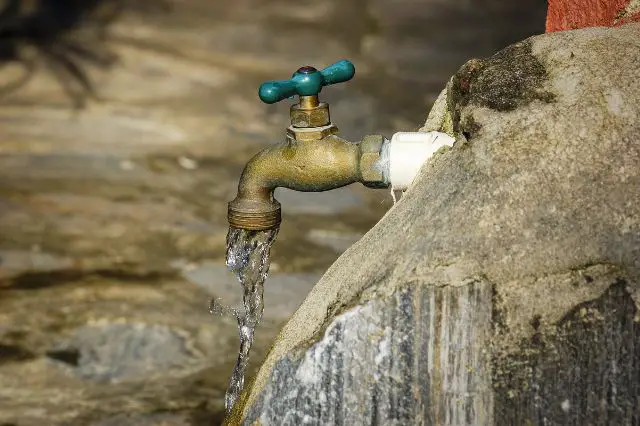The History of Water Rates in the UK: From Ancient Times to the Present Day

The privatisation of water services in 1989 marked a major shift in the way that water rates were determined in the UK. Prior to privatisation, water rates were set by local authorities and were based on the cost of providing water services to the local community. After privatisation, water rates were set by private companies, who were responsible for collecting, treating, and delivering water to households and businesses across the country.
This article will explore the history of water rates in the UK, including the factors that have influenced their development and the impact that they have had on consumers over the years. It will also examine the current state of the water industry in the UK, including recent changes to water rates and ongoing debates about the best way to manage this vital resource.
Origins of Water Supply in the UK
Water supply in the UK has a long and fascinating history dating back to the Roman era. The Romans were the first to introduce sophisticated water supply systems, including aqueducts, public baths, fountains, and latrines. They built aqueducts to transport water from distant sources to the cities, and their public baths were a hub of social activity.
After the fall of the Roman Empire, water supply systems in the UK fell into disrepair, and it was not until the Middle Ages that water supply began to be improved again. During this time, wells and springs were the primary sources of water, and people would often have to travel long distances to collect water.
In the 16th and 17th centuries, water supply in the UK began to improve again with the construction of waterworks in London and other major cities. These waterworks used wooden pipes to transport water from rivers and springs to the cities.
In the 19th century, water supply in the UK underwent a significant transformation with the introduction of cast iron pipes and the construction of reservoirs. This allowed water to be transported over longer distances and stored for longer periods of time, making it more reliable and accessible.
Today, water supply in the UK is managed by a complex network of water companies and local authorities. England and Wales have ten regional water and sewage companies, while Scotland has a single publicly owned water company and Northern Ireland has a single publicly owned water and sewerage company. These companies are responsible for the treatment and distribution of water to homes and businesses across the country.
Industrial Revolution and Urbanisation
During the Industrial Revolution, Britain experienced a significant shift from an agricultural to an industrial economy. This period saw the growth of factories, mass production, and the development of new technologies, which led to an increase in urbanisation. As a result, the population in urban areas grew rapidly, and the demand for water and sanitation services increased.
The development of water and sewerage services during this period was shaped by the industrial revolution, urbanisation, and the increasing demand driven by economic development. The introduction of pumping stations allowed water to be supplied to urban areas, and the construction of sewers improved sanitation and public health.
However, the rapid growth of urbanisation during the Industrial Revolution also led to significant challenges for water supply and sanitation. The lack of proper sewage systems caused outbreaks of diseases such as cholera, typhoid, and dysentery. The demand for water also outstripped the supply, leading to water shortages and rationing.
To address these challenges, the government passed several acts in the 19th century to improve the quality and availability of water and sanitation services. The Public Health Act of 1848 introduced the concept of public health and established a central board of health responsible for water supply and sanitation. The Metropolitan Water Act of 1852 established the Metropolitan Water Board to improve water supply in London.
Establishment of Water Companies
In the early 19th century, most water works in the United Kingdom were built, owned, and operated by private companies. These companies were granted charters by Parliament to provide water supply services to specific areas.
The first water company in the UK was the Chelsea Waterworks Company, established in 1723. By the mid-19th century, there were around 50 water companies operating throughout the country.
However, the quality of the water provided by these companies was often poor, and outbreaks of waterborne diseases such as cholera were common. This led to increasing pressure for the government to take action to improve the provision of clean water.
In response, the Metropolitan Water Act was passed in 1852, which established a Metropolitan Water Board to oversee the supply of water to London. This was followed by the Public Health Act of 1875, which gave local authorities the power to establish their own water supply systems.
By the early 20th century, many of the smaller water companies had been acquired by larger companies, and the industry was dominated by a few large players. In 1973, the Water Act was passed, which established ten regional water authorities responsible for water supply and sewage treatment.
In 1989, the water and sewerage services in England and Wales were privatised, and the industry was opened up to competition. Today, the water industry in the UK is dominated by ten private companies, who are regulated by the Water Services Regulation Authority (Ofwat).
Nationalization and Privatisation
The history of water rates in the UK is closely tied to the nationalization and privatization of water companies. In 1948, the Labour government nationalized the water industry, creating 10 regional water authorities (RWAs). These RWAs were responsible for the supply and distribution of water and wastewater services in their respective regions.
In 1989, the Conservative government under Margaret Thatcher implemented a program of privatization, which included the sale of the 10 RWAs to private companies. The privatization of the water industry was part of a broader effort to deregulate the economy and reduce the role of the state in economic affairs.
The privatization of the water industry was controversial at the time, with critics arguing that it would lead to higher prices, reduced investment in infrastructure, and a focus on profits over public service. Supporters of privatization argued that it would increase efficiency, improve service quality, and provide better value for customers.
Since privatization, the water industry has undergone significant changes. The 10 RWAs were sold to private companies, which were later consolidated into a small number of large water companies. These companies are now responsible for the supply and distribution of water and wastewater services in England and Wales.
The impact of privatization on water rates has been a subject of debate. Critics argue that privatization has led to higher prices, while supporters point to increased investment in infrastructure and improved service quality. In reality, the impact of privatization on water rates has been mixed, with some areas seeing significant increases in prices, while others have seen little change.
From Pumps to Pipes: The Industrial Revolution’s Ripple Effect on UK’s Water and Sanitation
In conclusion, the Industrial Revolution and urbanisation had a significant impact on the development of water and sanitation services in the UK. The introduction of pumping stations and the construction of sewers improved public health, but the rapid growth of urbanisation also led to significant challenges for water supply and sanitation. The government passed several acts to address these challenges, which paved the way for the modern water and sanitation services we have today.



